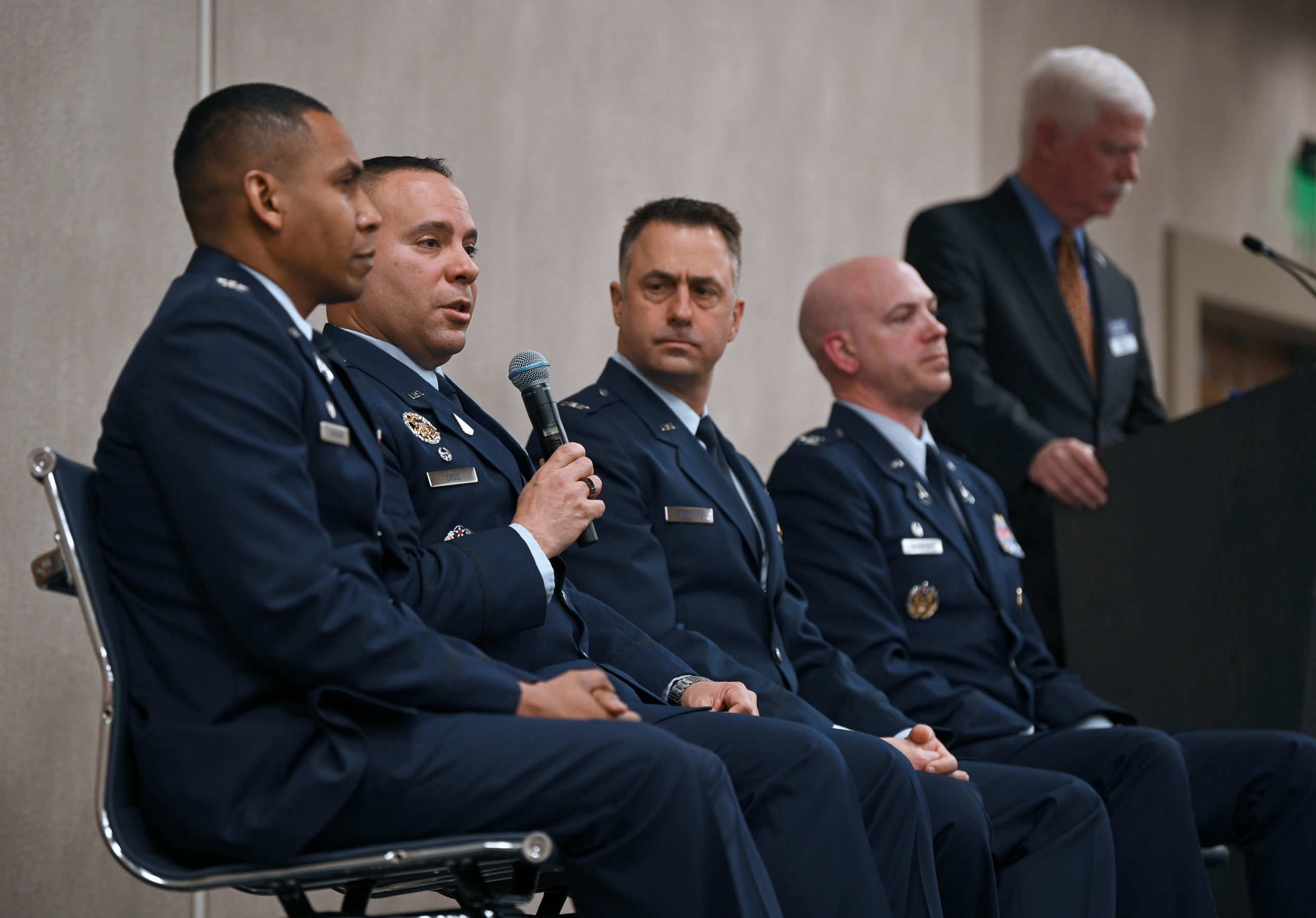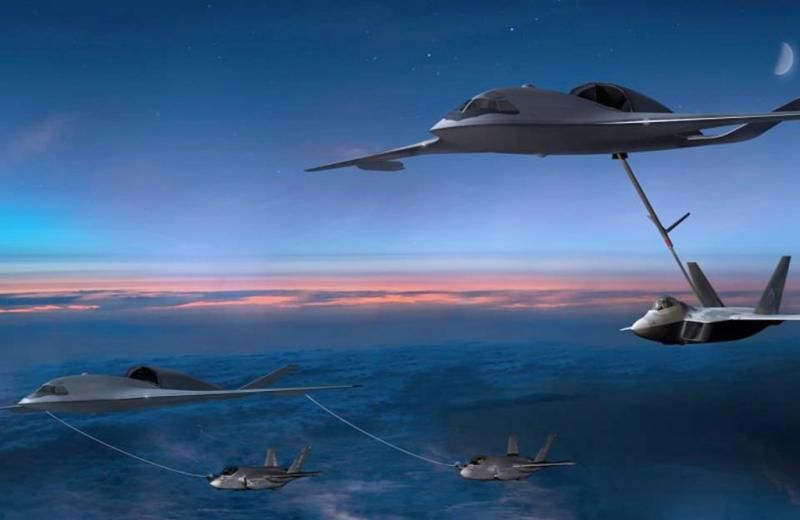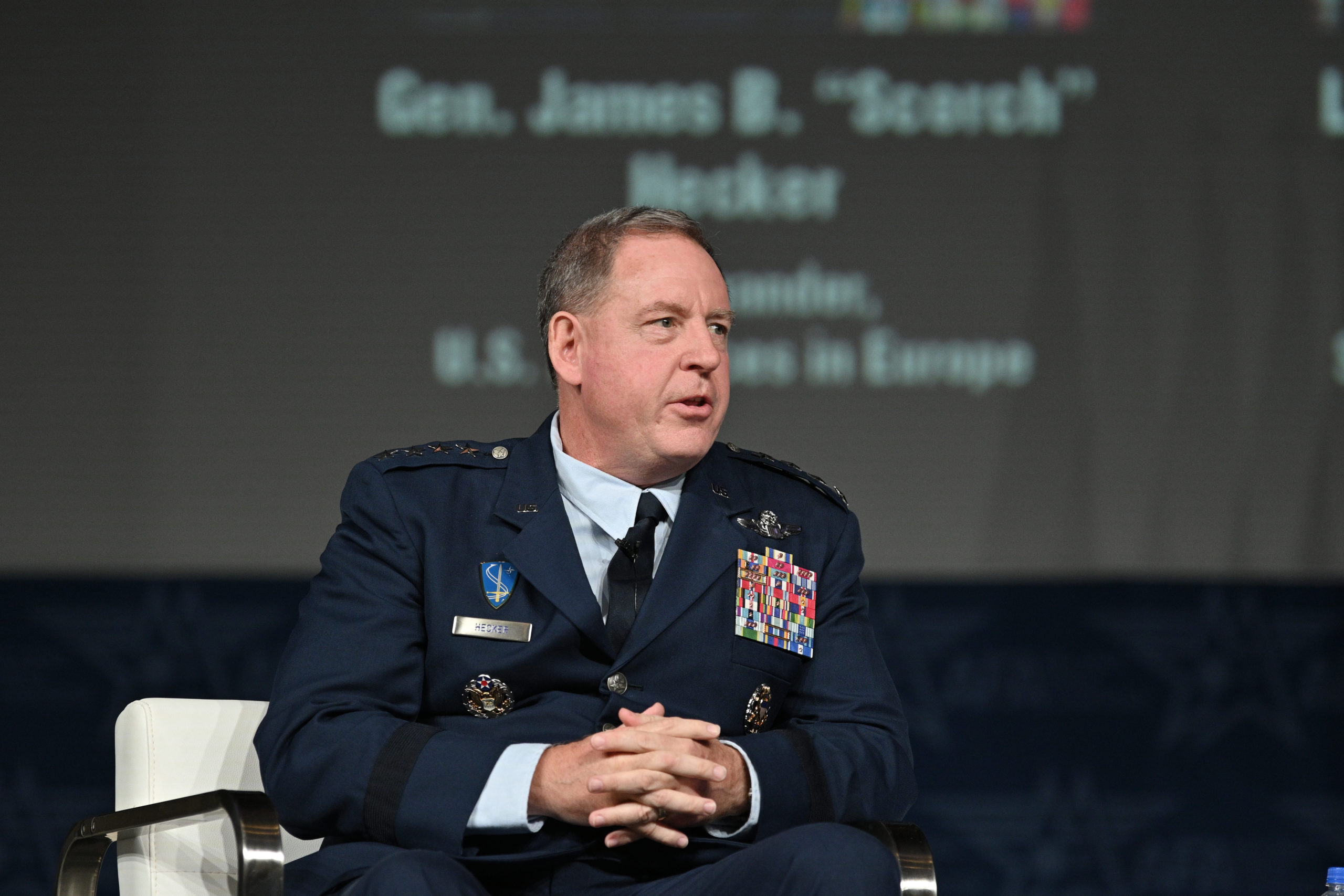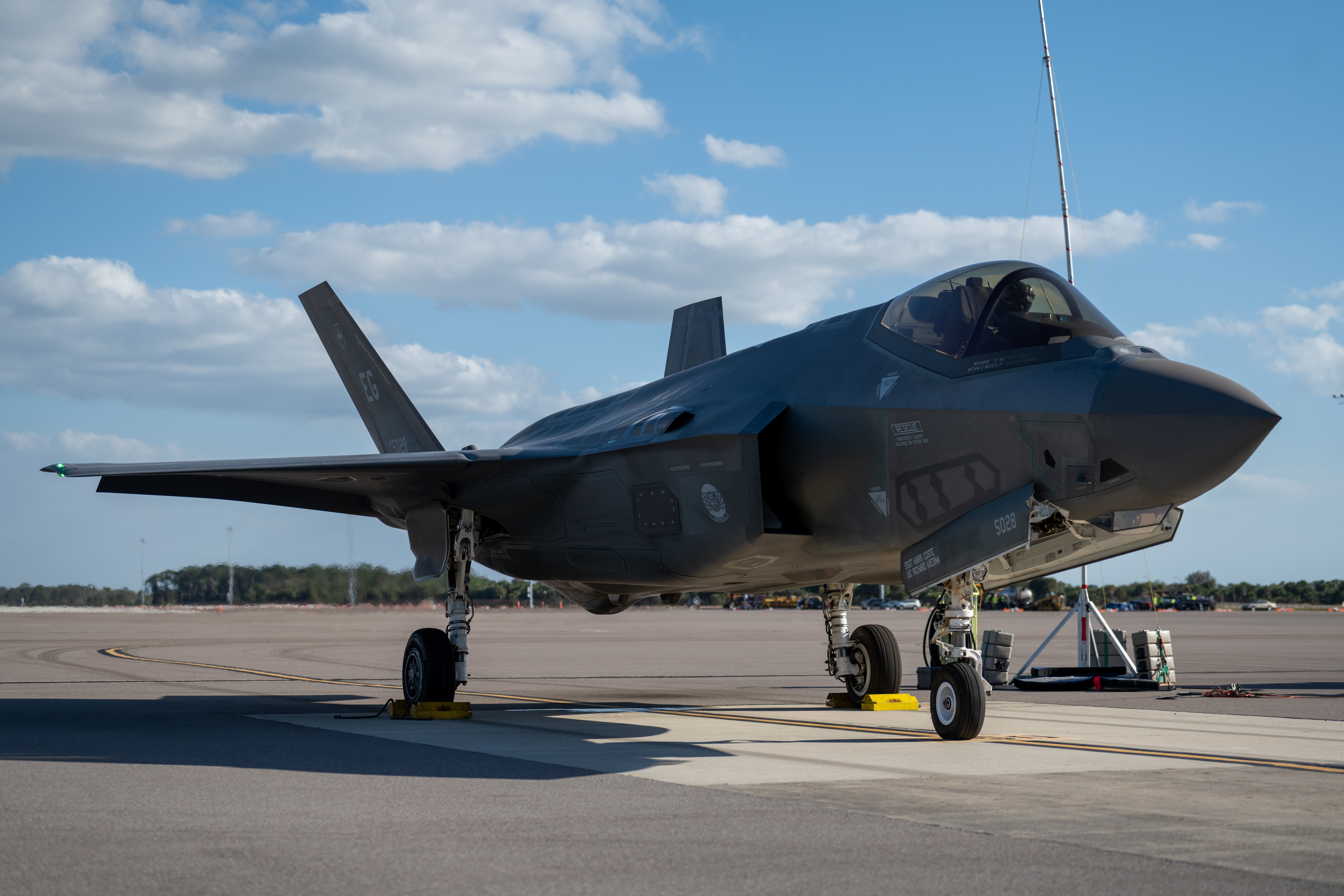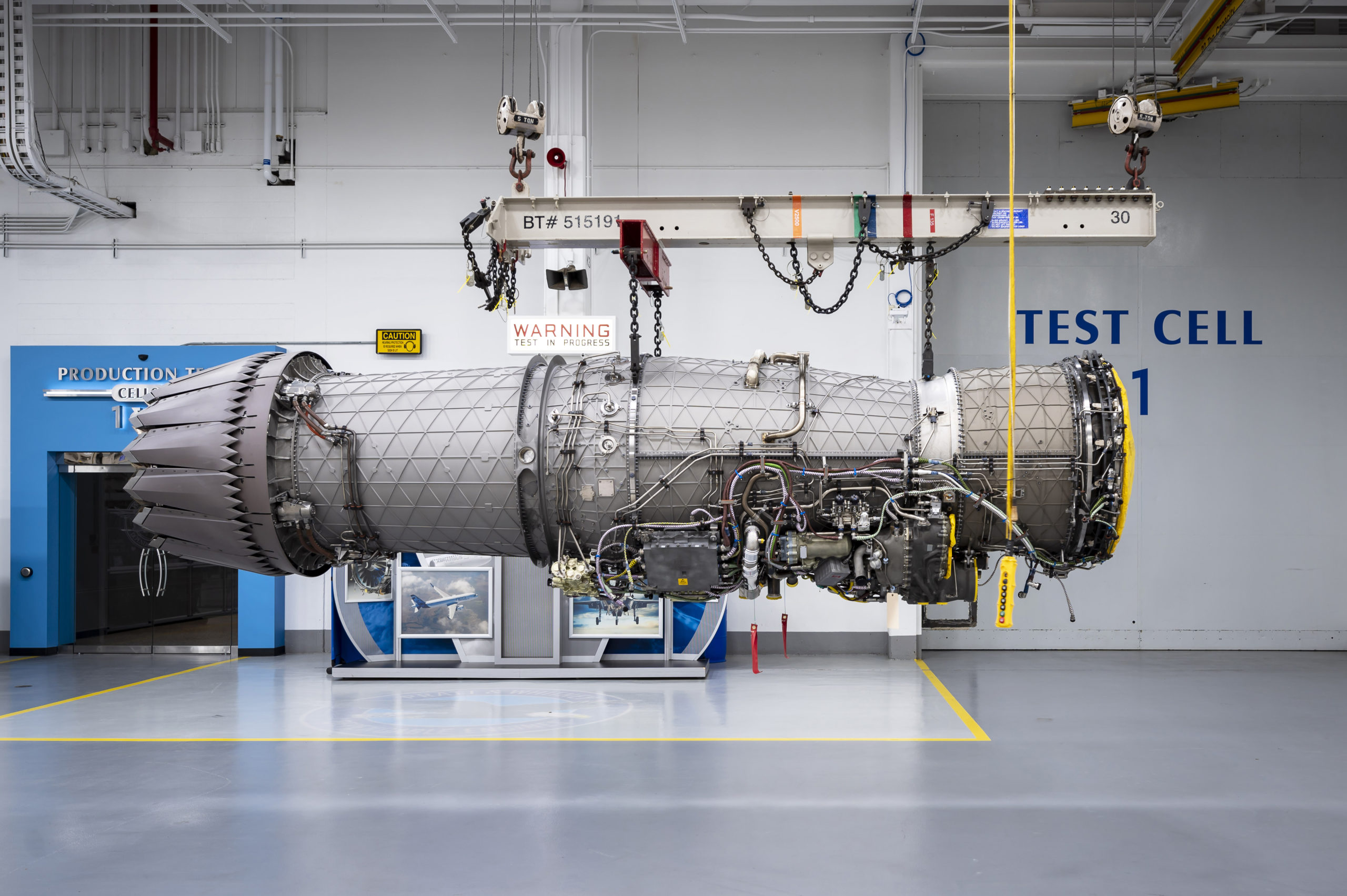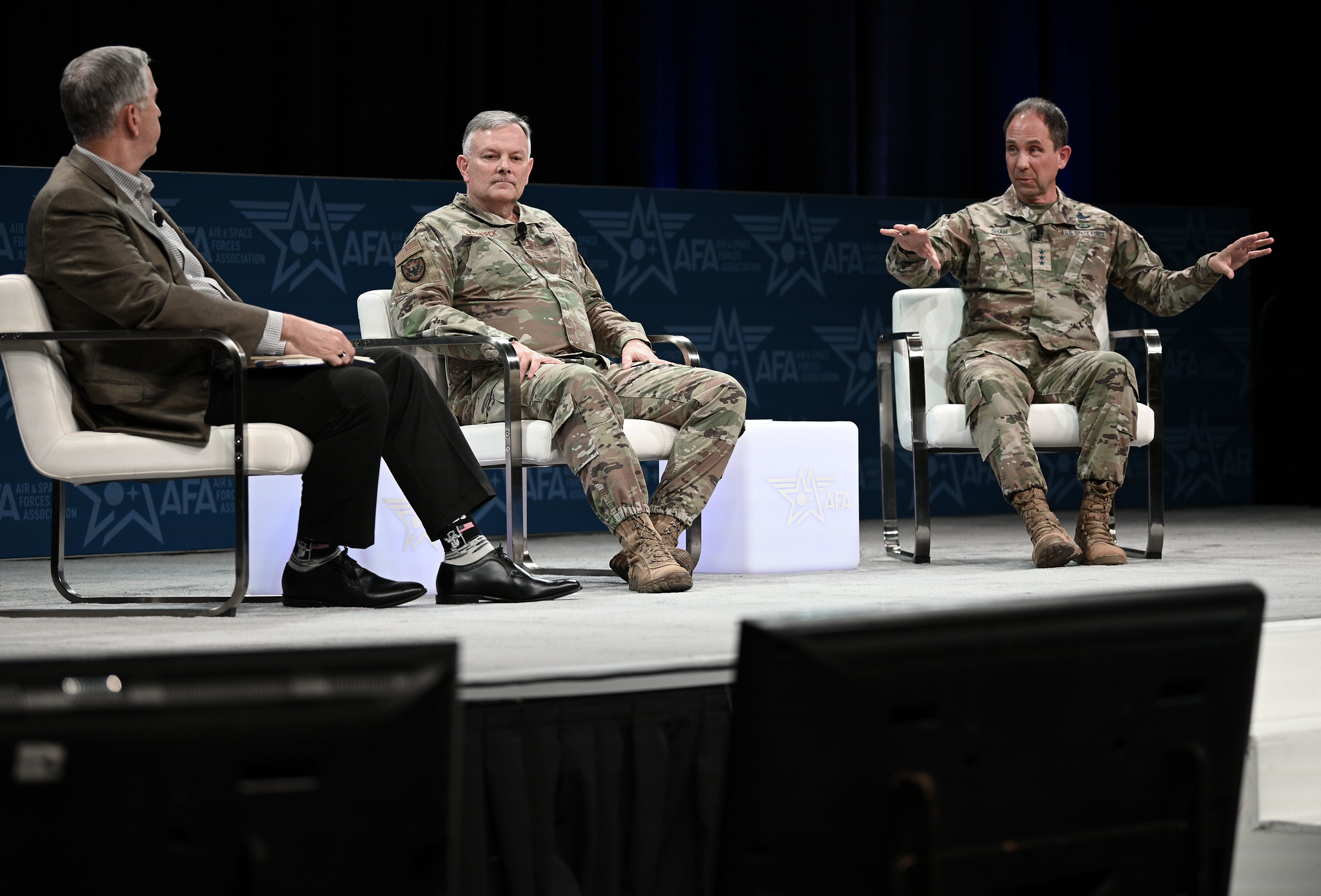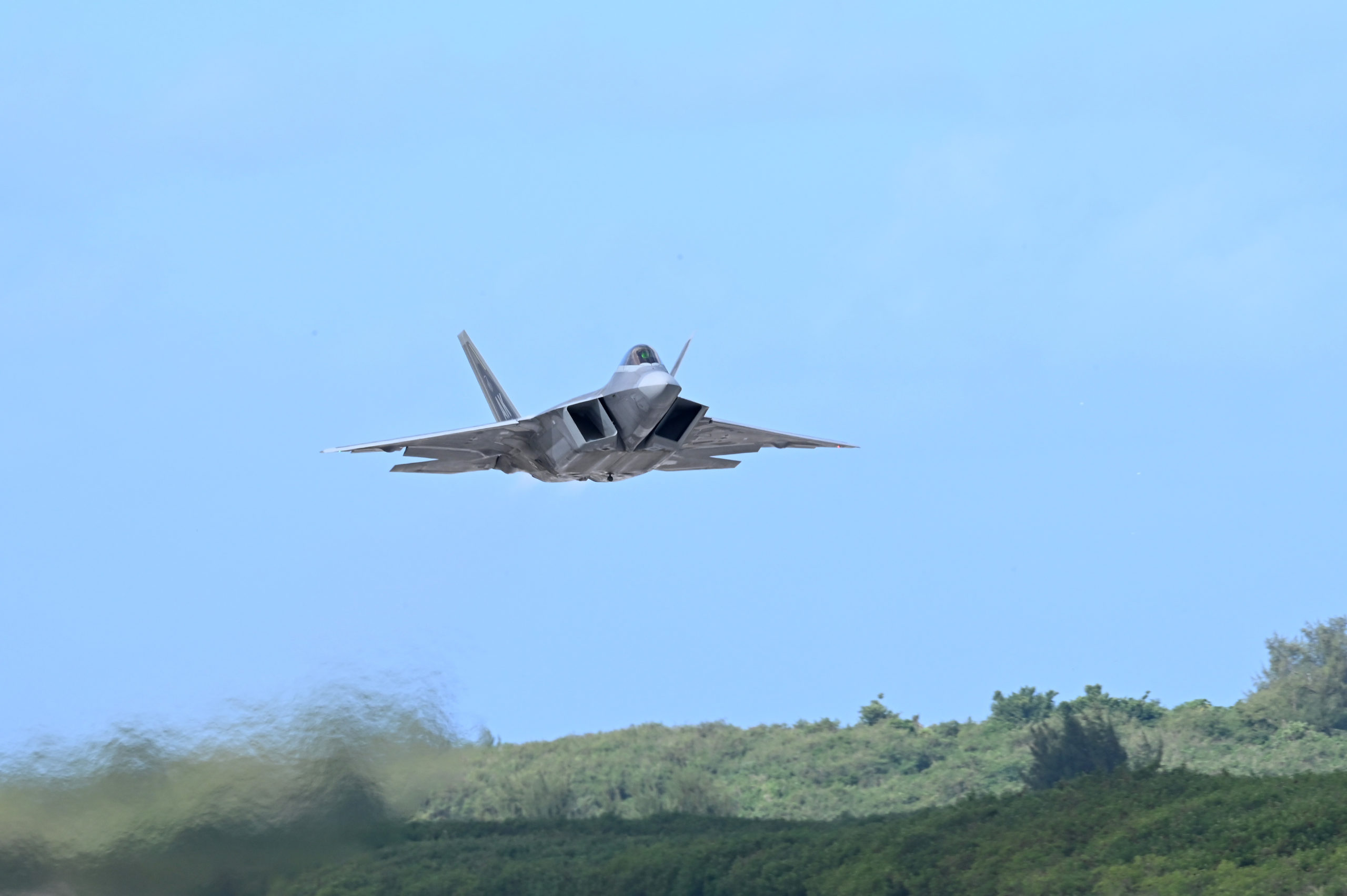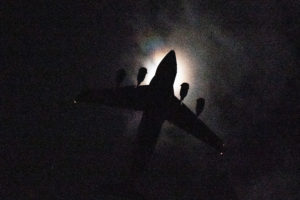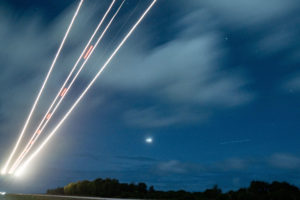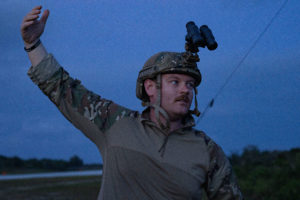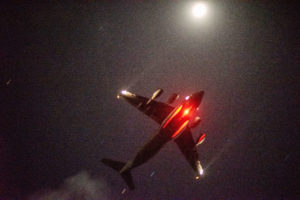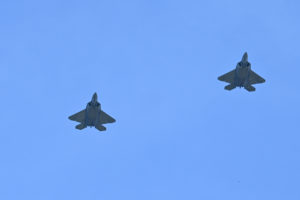
Two F-22 Raptors assigned to the 525th Expeditionary Fighter Squadron, Kadena Air Base, Japan, fly in formation during Exercise Agile Reaper over Tinian International Airport, Northern Mariana Islands, during Exercise Agile Reaper 23-1, March 2, 2023. Throughout the weeklong exercise, F-22 Raptors will fly sorties from locations within the Northern Mariana Islands in a first for the aircraft. AR 23-1 supports the Air Force’s requirement for expeditionary skills necessary to operate outside of military installations; Airmen must have diverse skills that enable them to operate in a contested, degraded, and operationally limited environment. (U.S. Air Force photo by Tech. Sgt. Hailey Staker)
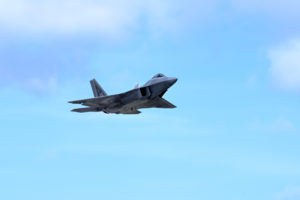
An F-22 Raptor assigned to the 525th Expeditionary Fighter Squadron, Kadena Air Base, Japan, launches from Tinian International Airport, Northern Mariana Islands, during Exercise Agile Reaper 23-1, March 2, 2023. Throughout the weeklong exercise, F-22 Raptors will fly sorties from locations within the Northern Mariana Islands in a first for the aircraft. AR 23-1 supports the Air Force’s requirement for expeditionary skills necessary to operate outside of military installations; Airmen must have diverse skills that enable them to operate in a contested, degraded, and operationally limited environment. (U.S. Air Force photo by Tech. Sgt. Hailey Staker)
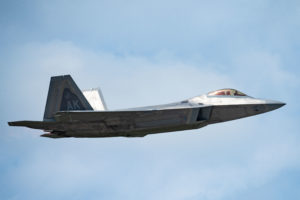
F-22 Raptors assigned to the 525th Expeditionary Fighter Squadron, Kadena Air Base, Japan, take off from Tinian International Airport, Northern Mariana Islands, during Exercise Agile Reaper 23-1, March 2, 2023. AR 23-1 presents an opportunity for Airmen from the 3rd Air Expeditionary Wing to practice and execute their ability to rapidly move personnel, materiel, equipment, and aircraft to, from, and within a theater. (U.S. Air Force photo by Airman 1st Class Julia Lebens)
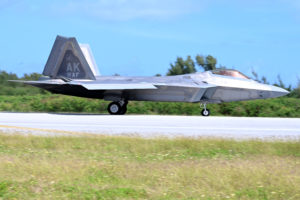
An F-22 Raptor assigned to the 525th Expeditionary Fighter Squadron, Kadena Air Base, Japan, lands at Tinian International Airport, Northern Mariana Islands, after conducting training in the Mariana Islands Range Training during Exercise Agile Reaper 23-1, March 2, 2023. During the exercise, C-17s assigned to the 517th Airlift Squadron and F-22 Raptors will conduct training operations in the Mariana Islands Range Training Complex. The MIRC is a geographic area containing a complex of military training ranges, and includes land, sea, and airspace on and around the islands of Guam, Rota, Tinian, Saipan, and Farallon de Medinilla, as well as open ocean waters stretching north to Pagan and west to the middle of the Philippine Sea. (U.S. Air Force photo by Tech. Sgt. Hailey Staker)
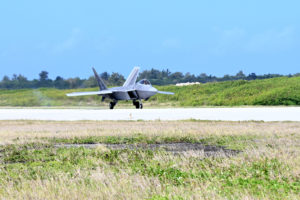
An F-22 Raptor assigned to the 525th Expeditionary Fighter Squadron, Kadena Air Base, Japan, lands at Tinian International Airport, Northern Mariana Islands, after conducting training in the Mariana Islands Range Training during Exercise Agile Reaper 23-1, March 2, 2023. During the exercise, C-17s assigned to the 517th Airlift Squadron and F-22 Raptors will conduct training operations in the Mariana Islands Range Training Complex. The MIRC is a geographic area containing a complex of military training ranges, and includes land, sea, and airspace on and around the islands of Guam, Rota, Tinian, Saipan, and Farallon de Medinilla, as well as open ocean waters stretching north to Pagan and west to the middle of the Philippine Sea. (U.S. Air Force photo by Tech. Sgt. Hailey Staker)
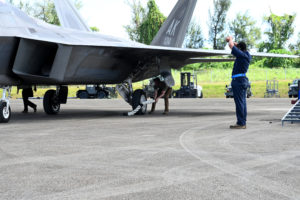
Crew chiefs assigned to the 525th Aircraft Maintenance Unit, Kadena Air Base, Japan, park and chalk an F-22 Raptor assigned to the 525th Expeditionary Fighter Squadron, Kadena AB, after landing at Tinian International Airport, Northern Mariana Islands, during Exercise Agile Reaper 23-1, March 2, 2023. AR 23-1 is an Agile Combat Employment exercise and tests ACE’s hub and spoke frameworks by only employing bare-necessity, mission essential personnel and equipment to operate in a degraded environment. (U.S. Air Force photo by Tech. Sgt. Hailey Staker)
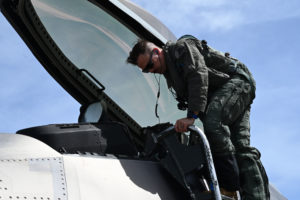
Fury, an F-22 Raptor pilot assigned to the 525th Aircraft Maintenance Unit, Kadena Air Base, Japan, climbs out of an F-22 Raptor at Tinian International Airport, Northern Mariana Islands, after conducting training in the Mariana Islands Range Training during Exercise Agile Reaper 23-1, March 2, 2023. During the exercise, C-17s assigned to the 517th Airlift Squadron and F-22 Raptors will conduct training operations in the Mariana Islands Range Training Complex. The MIRC is a geographic area containing a complex of military training ranges, and includes land, sea, and airspace on and around the islands of Guam, Rota, Tinian, Saipan, and Farallon de Medinilla, as well as open ocean waters stretching north to Pagan and west to the middle of the Philippine Sea. (U.S. Air Force photo by Tech. Sgt. Hailey Staker)
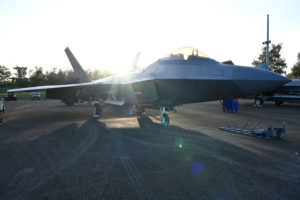
An F-22 Raptor assigned to the 525th Expeditionary Fighter Squadron, Kadena Air Base, Japan, sits on the flight line during pre-flight maintenance for Exercise Agile Reaper 23-1 at Tinian International Airport, Northern Mariana Islands, March 2, 2023. Throughout the weeklong exercise, F-22 Raptors will fly sorties from locations within the Northern Mariana Islands in a first for the aircraft. AR 23-1 supports the Air Force’s requirement for expeditionary skills necessary to operate outside of military installations; Airmen must have diverse skills that enable them to operate in a contested, degraded, and operationally limited environment. (U.S. Air Force photo by Tech. Sgt. Hailey Staker)
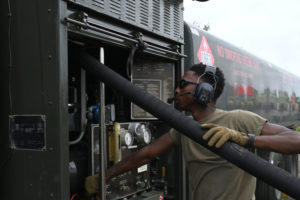
Airman 1st Class Arion White, a fuels distribution operator assigned to the 3rd Air Expeditionary Wing, reels in a fuel hose after refueling an F-22 Raptor assigned to the 525th Expeditionary Fighter Squadron, Kadena Air Base, Japan, during Exercise Agile Reaper 23-1 at Tinian International Airport, Northern Mariana Islands, March 1, 2023. AR 23-1 is an Agile Combat Employment exercise and tests ACE’s hub and spoke frameworks by only employing bare-necessity, mission essential personnel and equipment to operate in a degraded environment. (U.S. Air Force photo by Tech. Sgt. Hailey Staker)
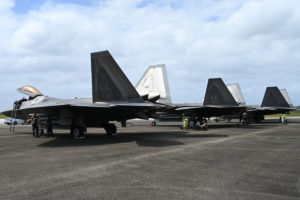
F-22 Raptors assigned to the 525th Expeditionary Fighter Squadron, Kadena Air Base, Japan, sit on the flight line after landing during Exercise Agile Reaper 23-1 at Tinian International Airport, Northern Mariana Islands, March 1, 2023. Throughout the weeklong exercise, F-22 Raptors will fly sorties from locations within the Northern Mariana Islands in a first for the aircraft. AR 23-1 supports the Air Force’s requirement for expeditionary skills necessary to operate outside of military installations; Airmen must have diverse skills that enable them to operate in a contested, degraded, and operationally limited environment. (U.S. Air Force photo by Tech. Sgt. Hailey Staker)
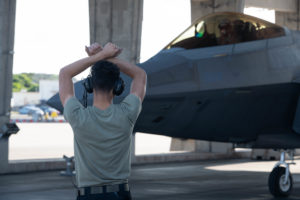
Airman 1st Class Khyrese Roberts, 525th Aircraft Maintenance Unit assistant dedicated crew chief, marshals an F-22A Raptor prior to departure at Kadena Air Base, Japan, March 1, 2023. Agile Reaper 23-1 is the 3rd Air Expeditionary Wing’s effort to exercise agile combat employment and allows personnel to rehearse capabilities to provide air dominance, global mobility and command and control for the U.S. Indo-Pacific Command commander. (U.S. Air Force photo by Airman 1st Class Tylir Meyer)
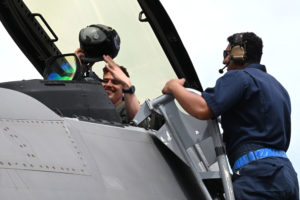
Rowdy, left, an F-22 Raptor pilot assigned to the 525th Expeditionary Fighter Squadron, Kadena Air Base, Japan, catches up with Senior Airman Alexander Blum-Ramos, right, a crew chief assigned to the 525th EFS, after landing during Exercise Agile Reaper 23-1 at Tinian International Airport, Northern Mariana Islands, March 1, 2023. Throughout the weeklong exercise, F-22 Raptors will fly sorties from locations within the Northern Mariana Islands in a first for the aircraft. AR 23-1 is an Agile Combat Employment exercise and tests ACE’s hub and spoke frameworks by only employing bare-necessity, mission essential personnel and equipment to operate in a degraded environment. (U.S. Air Force photo by Tech. Sgt. Hailey Staker)
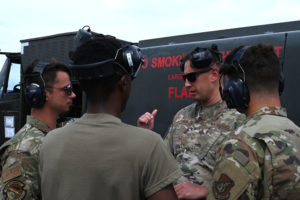
Tech. Sgt. Jordan Laughlin, the fuels distribution section chief assigned to the 3rd Air Expeditionary Wing, briefs his fuels distribution operators on refueling operations during Exercise Agile Reaper 23-1 at Tinian International Airport, Northern Mariana Islands, March 1, 2023. AR 23-1 supports the Air Force’s requirement for expeditionary skills necessary to operate outside of military installations; Airmen must have diverse skills that enable them to operate in a contested, degraded, and operationally limited environment. (U.S. Air Force photo by Tech. Sgt. Hailey Staker)
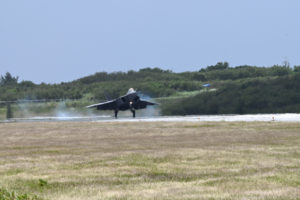
An F-22 Raptor assigned to the 525th Expeditionary Fighter Squadron, Kadena Air Base, Japan, lands during Exercise Agile Reaper 23-1 at Tinian International Airport, Northern Mariana Islands, March 1, 2023. During the exercise, C-17s and F-22 Raptors assigned to the 525th Expeditionary Fighter Squadron will conduct training operations in the Mariana Islands Range Training Complex. The MIRC is a geographic area containing a complex of military training ranges, and includes land, sea, and airspace on and around the islands of Guam, Rota, Tinian, Saipan, and Farallon de Medinilla, as well as open ocean waters stretching north to Pagan and west to the middle of the Philippine Sea. (U.S. Air Force photo by Tech. Sgt. Hailey Staker)
